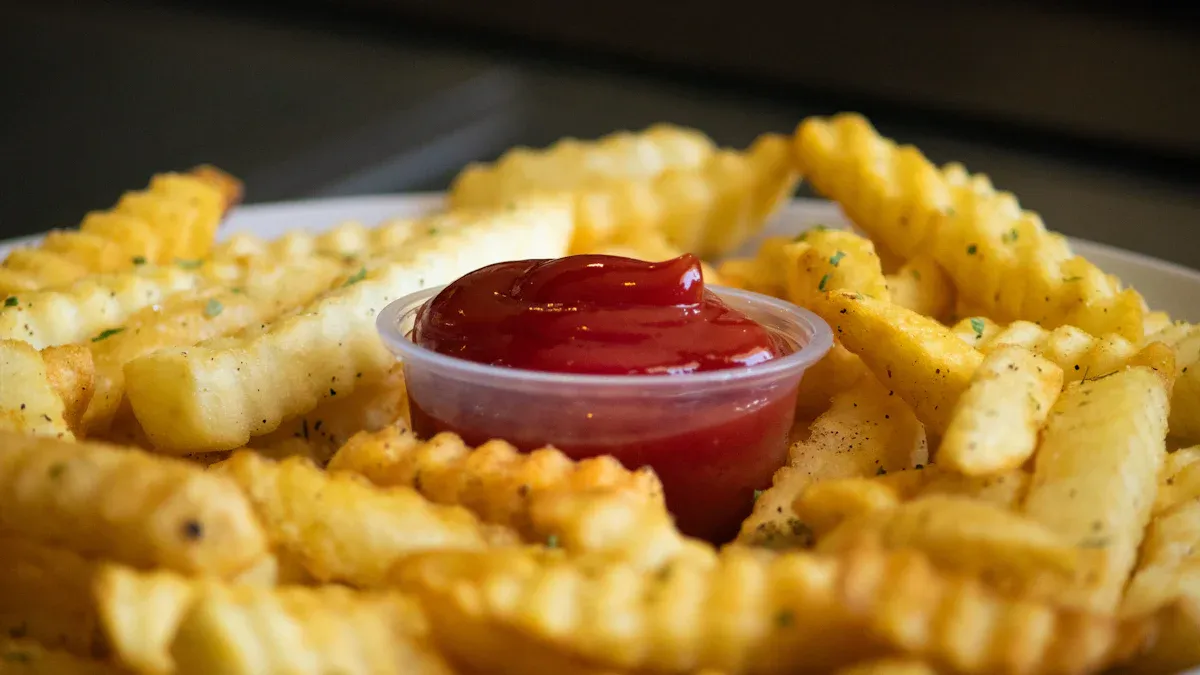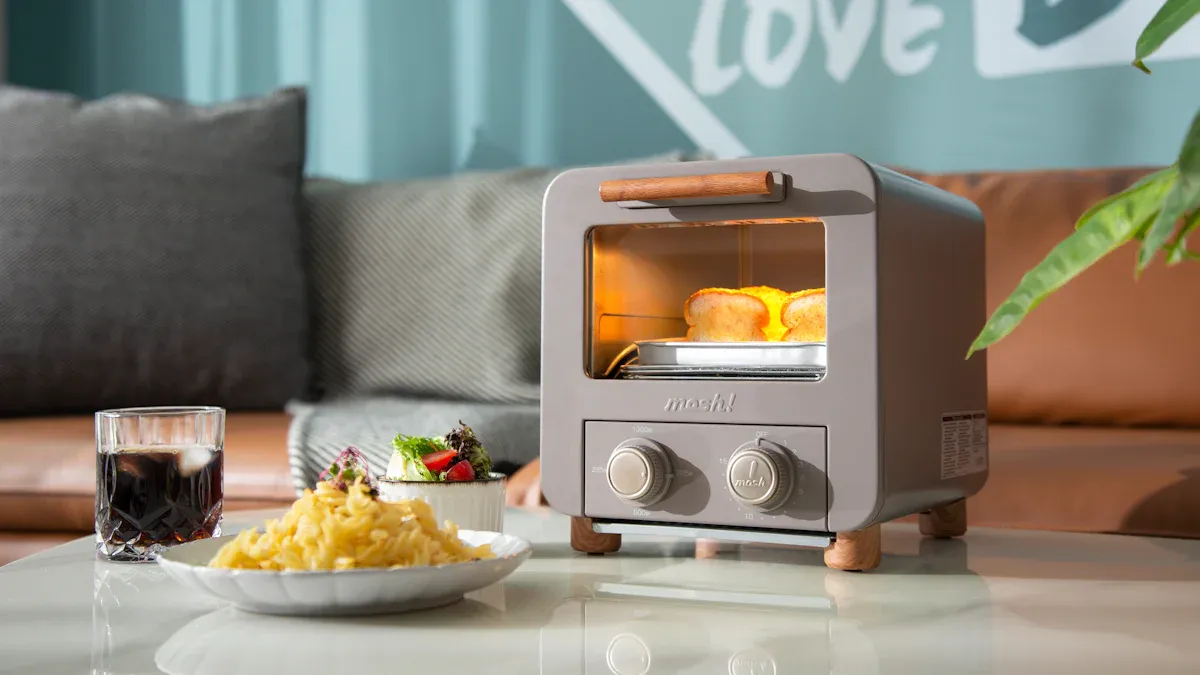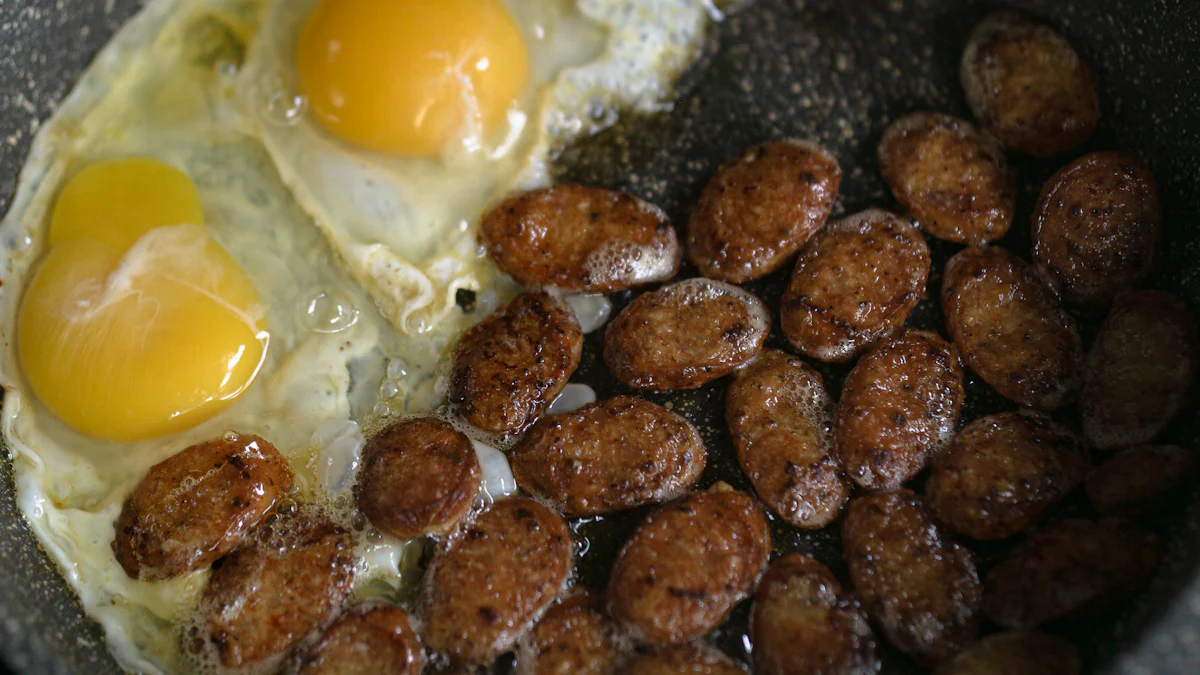
Why are air fryers such a big deal in modern kitchens? They’ve completely changed how people cook. Imagine enjoying crispy fries or juicy chicken without the guilt of deep frying. Air fryers use hot air and just a little oil to create meals that are healthier and still delicious. Plus, they’re fast! Who doesn’t love saving time?
Before diving in, it’s good to know a few air fryer tips for beginners. Air fryers are versatile. They can fry, bake, and even grill. Their compact size makes them perfect for small kitchens. Many models, like the Air Fryer Touch Screen Smart or the Multifunction Air Fryer, are easy to use and clean. With features like quick cooking and reduced fat consumption, they’re a must-have for anyone looking to simplify mealtime.
Did you know air fryers can also save money? In the U.K., 32% of owners noticed lower energy bills. They’re more cost-efficient than ovens, with a 1,500 W air fryer costing just 51p per hour to run compared to 85p for a 2,200 W oven. That’s a win for your wallet and the environment! Plus, if you’re looking for even more versatility, consider a Pressure Cooker Air Fryer, which combines the benefits of pressure cooking with air frying for even more cooking options.
Key Takeaways
- Heat up your air fryer first for better results. This helps make food crispy and cook evenly.
- Don’t put too much food in the basket. Place food in one layer so air moves around. This makes meals crispy and evenly cooked.
- Spray a little oil to help with browning and stop sticking. Using the right amount of oil makes food taste better.
Setting Up and Using Your Air Fryer
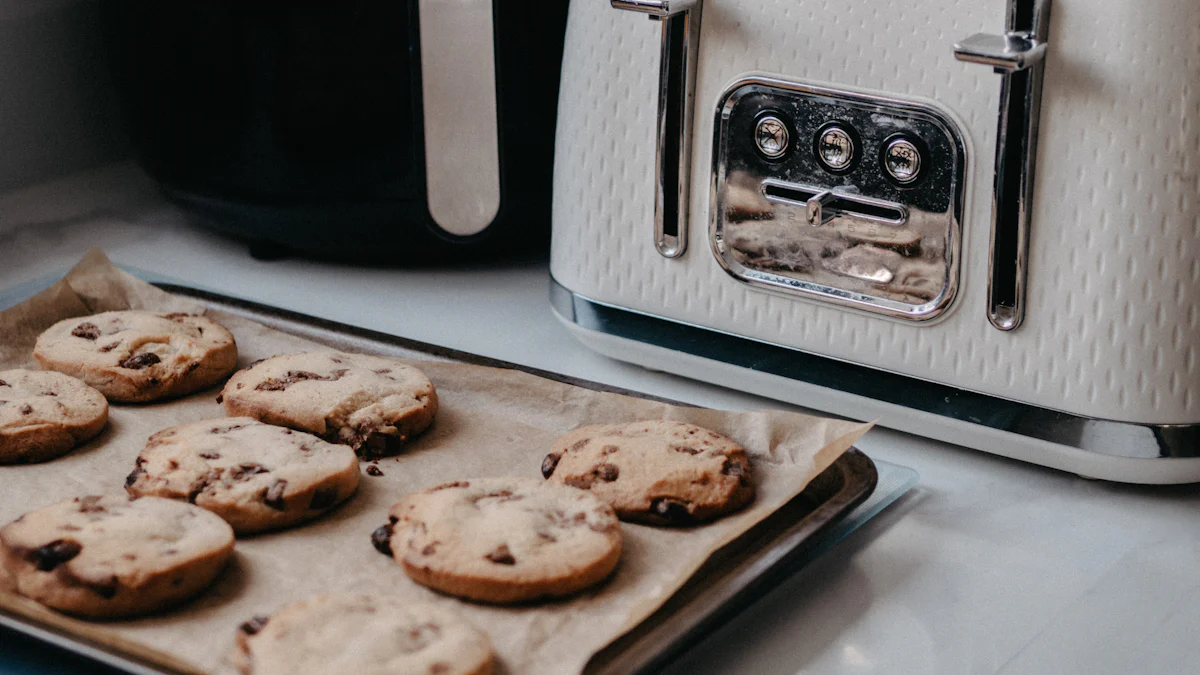
Unboxing and Initial Setup
Excited to start using your air fryer? Let’s get it ready! Follow these simple steps to set it up:
- Remove all packaging materials and take apart the removable components like the basket and grate.
- Wash these parts with warm, soapy water, then dry them thoroughly.
- Place the air fryer on a flat, heat-resistant surface, ensuring it’s at least eight inches away from the wall.
- Reassemble the basket and grate, and you’re good to go!
Taking a few minutes to set it up properly ensures safe and efficient cooking. Always check your owner’s manual for specific instructions.
Preheating for Better Results
Do you need to preheat your air fryer? The answer is yes! Preheating helps achieve consistent cooking results. It only takes a few minutes and makes a big difference. Most recipes work best at temperatures between 350°F and 400°F. Preheating ensures the food starts cooking immediately, giving you that perfect crispiness. Think of it as warming up your oven but much faster!
Arranging Food for Even Cooking
How you arrange food in the basket matters. Avoid overcrowding the basket. Spread the food in a single layer to allow hot air to circulate evenly. For best results, flip or shake the food halfway through cooking. This ensures every piece gets crispy and golden. Also, pat foods dry before cooking to enhance their texture. These small steps can make a big difference in your meals.
Understanding Temperature and Time Settings
Not sure how long to cook your food? Start by checking the recipe or your air fryer’s manual. Most air fryers have preset options, but you can adjust the temperature and time to suit your needs. For example, fries might need 15 minutes at 400°F, while chicken wings could take 20 minutes. Experimenting with these settings helps you learn what works best for your favorite dishes.
Air Fryer Tips for Beginners to Achieve the Best Results
Shake the Basket for Even Cooking
Why is shaking the basket so important? It ensures every piece of food cooks evenly. This tip works wonders for fries, wings, or vegetables. When food sits still, some parts may crisp up while others remain undercooked. Shaking the basket halfway through cooking solves this problem. For larger items like chicken breasts or steaks, flipping them instead of shaking works better. Think of it as giving your food a little attention to make sure it turns out perfect every time.
Avoid Overcrowding the Basket
Ever wondered why your food isn’t as crispy as you hoped? Overcrowding might be the culprit. When the basket is too full, hot air can’t circulate properly. This leads to steaming instead of crisping. To fix this, arrange food in a single layer with some space between pieces. If you’re cooking for a crowd, try making multiple batches. It might take a little longer, but the results will be worth it—crispy, golden perfection!
Use the Right Amount of Oil
How much oil should you use in an air fryer? Just a little goes a long way. Lightly spray or brush your food with oil to enhance browning and prevent sticking. Using too much oil can make food greasy, while too little might leave it dry. Oils like avocado, light olive, or grapeseed work well because of their high smoke points. For vegetables, toss them in a bowl with a small amount of oil before cooking. This simple step can elevate your dishes from good to great.
| Oil Type | Smoke Point (°F) | Notes |
|---|---|---|
| Avocado Oil | 520 | Neutral flavor, heart-healthy fats. |
| Light Olive Oil | 465-470 | Refined, longer shelf life. |
| Grapeseed Oil | 421 | Clean taste, versatile for cooking. |
Experiment with Accessories for More Options
Did you know air fryers can do more than just fry? Accessories can expand your cooking possibilities. A grill pan is perfect for steaks, while a baking pan lets you make cakes or pizzas. Silicone molds are great for frittatas or cheesy mac and cheese. For those who love variety, a double-layer rack allows you to cook more food at once. These tools make your air fryer even more versatile, turning it into a mini kitchen powerhouse.
Pro Tip: A 16-piece accessory kit can include everything from liners to skewers, making it easier to try new recipes.
Common Mistakes Beginners Should Avoid
Overfilling the Basket
Why does overfilling the basket cause problems? It blocks the hot air from circulating properly, leading to uneven cooking. Some parts of the food may turn out soggy, while others remain undercooked. Overcrowding also increases cooking time, which can be frustrating when you’re in a hurry. To avoid this, cook in smaller batches. It might take a little longer, but the results—crispy and evenly cooked food—are worth it. Think of it as giving your food the space it needs to shine.
Relying Only on the Timer
Do you trust the timer completely? Many beginners do, but this can lead to overcooked or undercooked meals. Air fryers cook faster than traditional ovens, so it’s important to check your food halfway through. Use a meat thermometer for proteins to ensure they’re cooked to the right temperature. For other foods, a quick peek can help you decide if they need more time. Remember, the timer is a guide, not a guarantee.
Using Too Much or Too Little Oil
How much oil is too much? Using excessive oil can cause a burnt flavor because the oil may reach its smoke point. On the other hand, using too little oil can make food dry and less flavorful. A light spray or brush of oil is usually enough. Some foods, like frozen fries, already contain oil and don’t need extra. Finding the right balance takes practice, but it’s one of the most valuable air fryer tips for beginners.
Forgetting to Preheat
Is preheating really necessary? Absolutely! Preheating ensures the air fryer reaches the right temperature before cooking begins. This step helps sear the surface of the food, locking in juices and creating a crispy exterior. Beginners often skip this step because they don’t realize its importance. Think of it like baking a cake—you wouldn’t put it in a cold oven, right? Preheating only takes a few minutes and makes a noticeable difference in your results.
Pro Tip: Set a timer for preheating so you don’t forget. It’s a small step that delivers big rewards!
Cleaning and Maintaining Your Air Fryer
Cleaning the Basket and Tray
How often should you clean the basket and tray? After every use! Cleaning them right away prevents food from hardening and makes the process much easier. Follow these steps for a spotless air fryer:
- Unplug the air fryer and let it cool completely.
- Remove the basket and tray, then wash them with warm, soapy water. A soft sponge works best to avoid scratching the surface.
- If your air fryer is dishwasher-safe, you can use it, but handwashing helps preserve the non-stick coating.
- Wipe the inside and outside of the air fryer with a damp cloth.
- Dry all parts thoroughly before reassembling.
Tip: Avoid abrasive materials or harsh chemicals. They can damage the non-stick coating over time.
Removing Stubborn Grease
What about those tough, greasy spots? Stubborn grease can be tricky, but it’s manageable with the right approach. Soak the basket or tray in hot, soapy water for 10 minutes to loosen stuck-on bits. Use a non-abrasive scrubber or a soft-bristled brush to gently clean the surface. For the heating element, wipe it carefully with a damp sponge or soft brush.
Note: Avoid metal utensils or harsh scrubbing tools. They can scratch or damage your air fryer.
Protecting the Non-Stick Coating
How can you keep the non-stick coating in good shape? Handwashing is key. Use mild dish soap and a soft sponge to clean the basket and tray. Skip the dishwasher whenever possible, as it can erode the coating over time. Avoid harsh chemicals or abrasive sponges. Treat the non-stick surface gently, and it will last much longer.
Pro Tip: A little care goes a long way. Always dry the basket and tray completely to prevent water spots or rust.
Regular Maintenance Tips
Want your air fryer to stay in top condition? Regular maintenance is essential. Clean the heating element with a soft brush to remove grease buildup. Wipe down the air fryer after each use to keep it looking new. Use liners or parchment paper to reduce mess and make cleaning easier. When not in use, store your air fryer in a clean, dry place.
Reminder: Always reassemble the air fryer according to the manufacturer’s instructions to ensure it works properly.
Foods to Cook and Recipe Ideas for Beginners
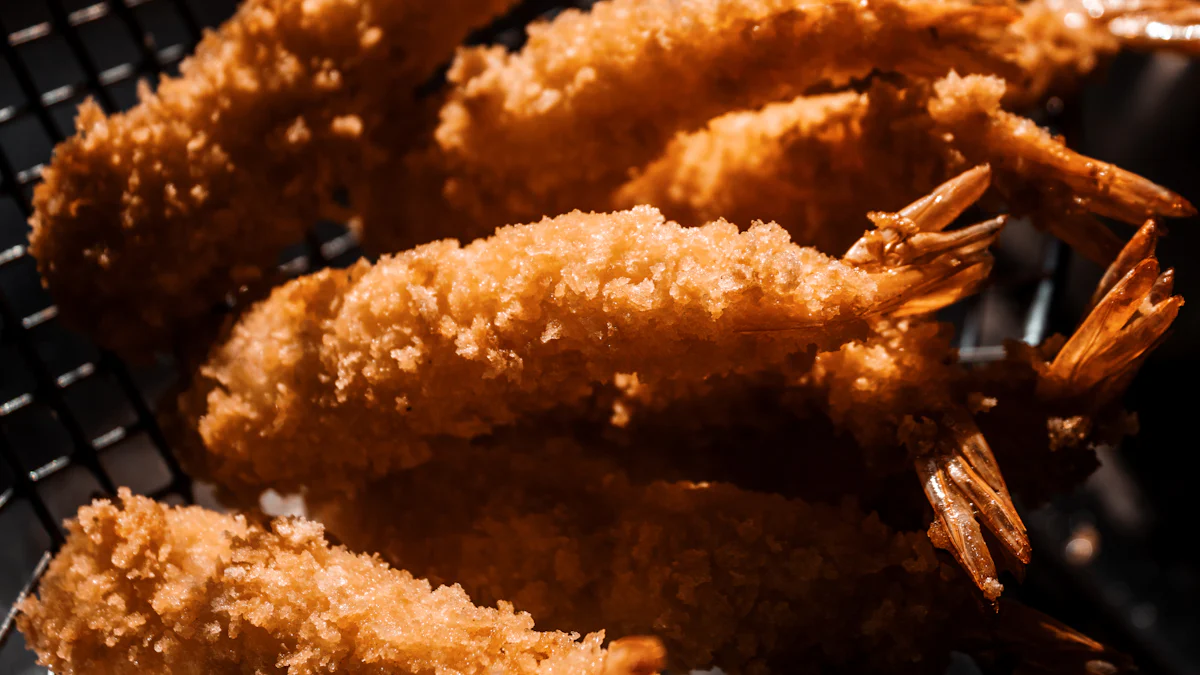
Popular Foods to Try First
What should beginners cook first in their air fryer? Start with simple, crowd-pleasing dishes that are easy to master:
- Breakfast Frittata: Add your favorite veggies, cheese, and eggs for a quick, healthy start to the day.
- Crumbed Chicken Tenderloin: Preheat your air fryer and cook at 375°F for crispy, golden perfection.
- Falafel: Blend chickpeas, herbs, and spices, then air fry at 350°F for 15 minutes.
- Air Fryer Salmon: Cook fillets at 400°F for 8-10 minutes for a flaky, flavorful meal.
- Vegetable Chips: Slice your favorite veggies, toss them in oil, and air fry at 350°F for 8-10 minutes.
These recipes are beginner-friendly and showcase the versatility of air fryers.
Surprising Foods You Can Air Fry
Did you know air fryers can handle more than just fries and chicken? Here are some unexpected options:
- Muffins and Cookies: Bake small batches of your favorite treats.
- Hard-Cooked Eggs: Cook eggs in their shells for a quick protein boost.
- Granola: Toast oats and nuts for a crunchy, homemade snack.
- Cinnamon Rolls: Enjoy gooey, bakery-style rolls in minutes.
These ideas prove that air fryers are more than just a frying tool—they’re a mini oven!
Quick and Easy Recipes
Looking for fast meals? Try these beginner-friendly recipes:
- Loaded Fries: Top air-fried fries with cheese, beans, or your favorite toppings.
- Air-Fryer Chicken Thighs: Rub with oil and spices, then cook skin-side down for crispy results.
- Roasted Chickpeas: Season and air fry at 390°F for 15 minutes for a crunchy snack.
- Sweet Potato Fries: A healthier alternative to regular fries, ready in under 20 minutes.
These recipes are perfect for busy days when you want something delicious without much effort.
Adapting Recipes for the Air Fryer
How can you adjust traditional recipes for air frying? Follow these tips:
- Increase the temperature for deep-fried recipes to around 390°F.
- Reduce oven temperatures by 25°F and cooking times by 25%.
- Use a light spray of oil for crispiness.
- Check for doneness two-thirds of the way through the original cooking time.
With these adjustments, you can transform your favorite recipes into air fryer-friendly versions.
Pro Tip: Always experiment with small batches first to find the perfect settings for your air fryer.
Mastering an air fryer doesn’t have to be complicated. Beginners should remember a few key tips: read the manual, preheat when needed, and avoid overcrowding the basket. Shake or flip food for even cooking, and use a meat thermometer for safety. These small steps lead to big results.
Ready to explore? Start with simple recipes and experiment with seasonings or marinades. Try cooking shredded chicken or roasted veggies to build confidence. Gradually, move on to more complex dishes. Creativity is your best tool!
Keep practicing and enjoy the process. Meal prepping with an air fryer saves time and keeps meals flavorful. Join challenges or meal planning guides to stay motivated. With every dish, you’ll discover new possibilities. Happy air frying!
FAQ
How much oil should someone use in an air fryer?
A light spray or brush of oil works best. Too much oil can make food greasy, while too little might leave it dry.
Tip: Use oils with high smoke points like avocado or grapeseed oil for better results.
Can frozen foods go directly into the air fryer?
Yes! Air fryers handle frozen foods well. No need to thaw. Just adjust the cooking time and temperature based on the food type.
Why does food sometimes stick to the basket?
Food sticks when there’s no oil or the basket isn’t clean. Lightly coat the basket with oil and clean it after every use to prevent sticking.
Pro Tip: Use parchment paper liners for easier cleanup and less sticking.
